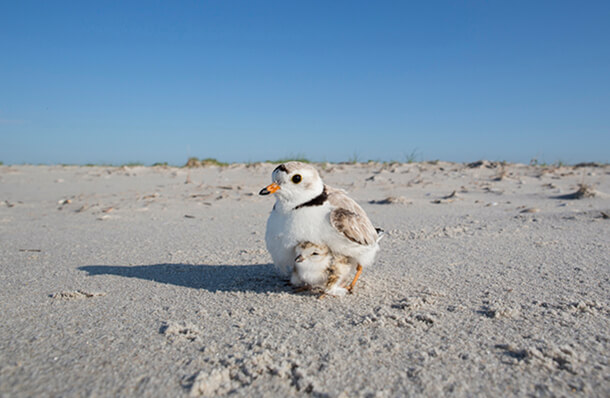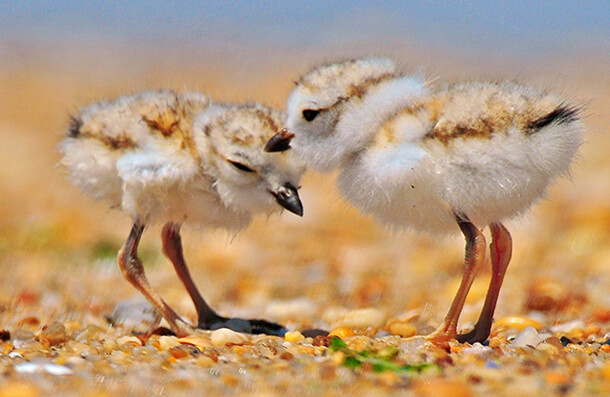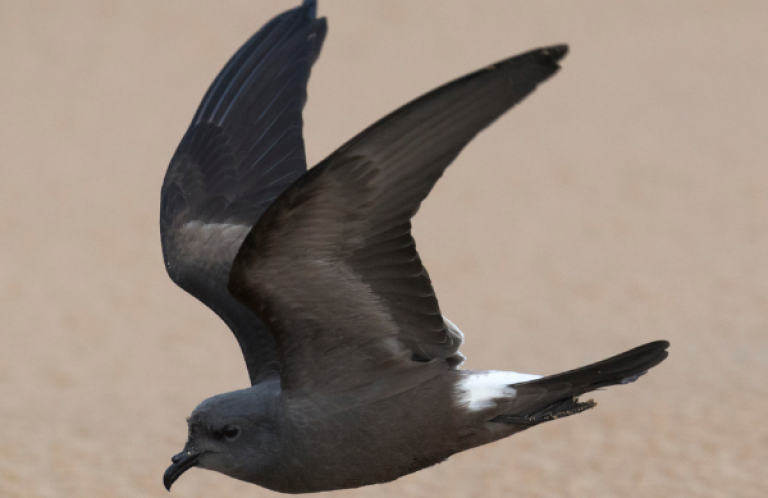Lawsuit Charges New York Parks with Violating Endangered Species Act

ABC's lawsuit asserts that Threatened Piping Plovers are at risk from feral cats at Jones Beach State Park, New York. Photo © Michael Stubblefield
Contact: Grant Sizemore, ABC Director of Invasive Species Programs, 202-888-7480
(Washington, D.C. March 31, 2016) American Bird Conservancy (ABC) today filed suit in federal court against the New York Office of Parks, Recreation, and Historic Preservation (Parks Office) over the continued presence of feral cat colonies at Jones Beach State Park. The colonies exist in close proximity to the nesting sites of Piping Plovers, a species listed as "Threatened" in the Atlantic Coast region under the Endangered Species Act (ESA). New York State's own Endangered Species Act lists the species as “Endangered.”
In a March 17, 2015, letter to ABC, the Parks Office acknowledged the presence of feral cats at Jones Beach and agreed that "our goal should be the removal of feral cats within New York State Parks." Yet no significant action has been taken. “The endangered plovers are already arriving for the 2016 breeding season and are being placed at an unacceptable risk," said Grant Sizemore, Director of ABC's Invasive Species Programs.
ABC's complaint seeks an injunction to require that the Parks Office remove the feral cats from Jones Beach and follows a Notice of Intent to Sue submitted on Dec. 1, 2015.
“We regret that legal action is our only recourse,” said Mike Parr, ABC's Chief Conservation Officer. “We would far prefer to settle this out of court.” He added, “The park has placed ‘no pets' signs at its parking lots, yet allows cats to be fed in the same areas. It makes no sense to prevent one but allow the other.”
The State has long accommodated multiple feral cat colonies at Jones Beach in spite of the known risks to Piping Plovers. The Parks Office has allowed structures to be built to house the cats, and it permits local residents to feed them routinely.
In 2009, the U.S. Fish and Wildlife Service (FWS) identified feral cats as a threat to Piping Plovers in the species' Atlantic Coast range, which includes Jones Beach. As FWS stated in its report, “Recent research and reports indicate that predation poses a continuing (and perhaps intensifying) threat to Atlantic Coast Piping Plovers.”

Plover chicks are especially vulnerable to predation before they are able to fly. Photo by Venu Challa
The FWS recognized that Piping Plovers are especially vulnerable to feral cats. Adult birds often feign a broken wing to distract predators, putting them at high risk of predation from non-native species. Plover chicks also move around the beach for approximately 25 days before they are able to fly, during which time they are especially vulnerable to cats.
Although many cats are beloved pets, free-roaming and feral cats are non-native predators that kill approximately 2.4 billion birds annually in the U.S. A single feral cat can kill, on average, from 20 to 55 birds a year. Responding to this threat, New York Governor Andrew Cuomo last year vetoed legislation that would have supported “Trap, Neuter, Release” programs that support feral cat colonies, citing the impacts these cats can have “on wildlife, including on threatened and endangered species, habitats, and food sources for native predators.”
“Feeding feral cats, as happens at Jones Beach, does not eliminate their instinct to hunt,” said Sizemore. “And in fact, the mere presence of cats has been shown to have significant adverse effects on breeding birds. Even when cats do not directly kill wildlife, they disrupt nesting and feeding behaviors.” One 2013 study showed as much as a 33 percent reduction in feeding of nestlings after cats made even a brief appearance near breeding areas.
American Bird Conservancy is being represented by Goodwin Procter LLP on a pro bono basis.
###
American Bird Conservancy is the Western Hemisphere's bird conservation specialist—the only organization with a single and steadfast commitment to achieving conservation results for native birds and their habitats throughout the Americas. With a focus on efficiency and working in partnership, we take on the toughest problems facing birds today, innovating and building on sound science to halt extinctions, protect habitats, eliminate threats, and build capacity for bird conservation.


















































